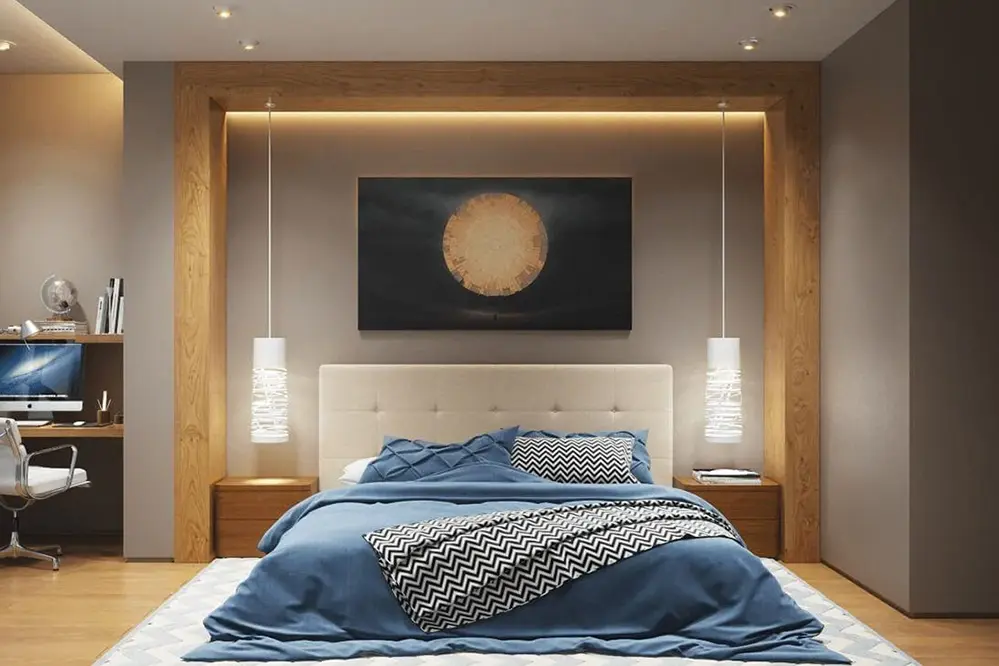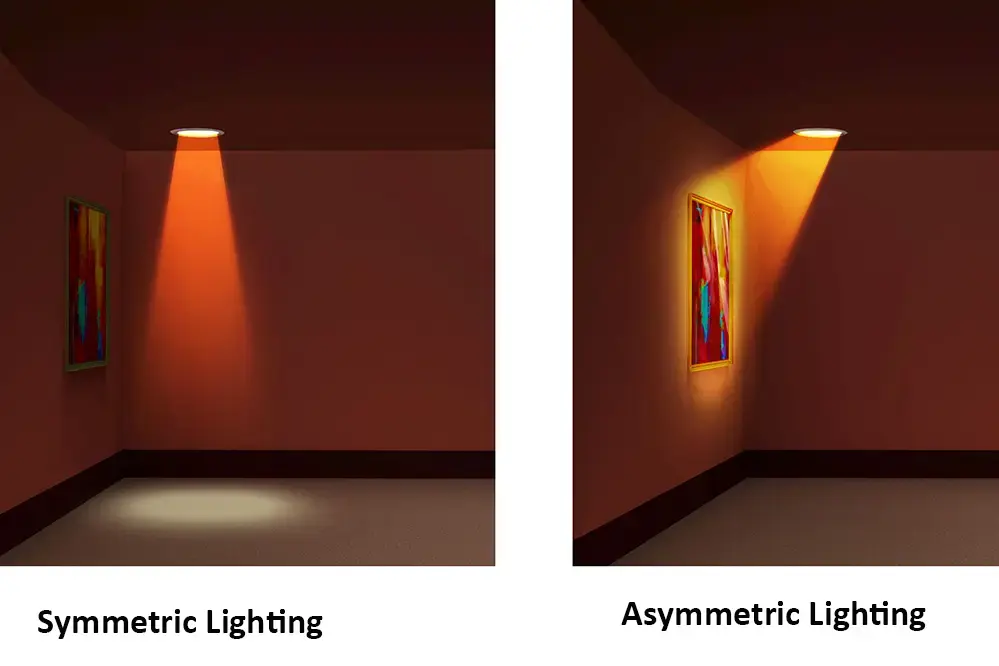When it comes to creating the perfect sanctuary for rest and relaxation, the color temperature of your bedroom lighting plays a crucial role. The debate between warm and cool light isn’t just about aesthetics; it’s about crafting an environment that supports your well-being. From easing stress to enhancing sleep quality, the right lighting can transform your bedroom into a haven of tranquility.
Imagine walking into a room where the lighting instantly makes you feel at ease. Warm light, with its soft, yellowish glow, mimics the natural light of a sunset, promoting relaxation and comfort. On the other hand, cool light, with its bright, bluish hue, can invigorate and energize, making it ideal for tasks that require focus. Striking the right balance between these two can create a harmonious blend of aesthetics and functionality, turning your bedroom into a versatile space that caters to all your needs.
Ready to transform your bedroom into the ultimate retreat? Let’s dive right in and explore the fascinating world of bedroom light color temperatures!
Understanding Color Temperature
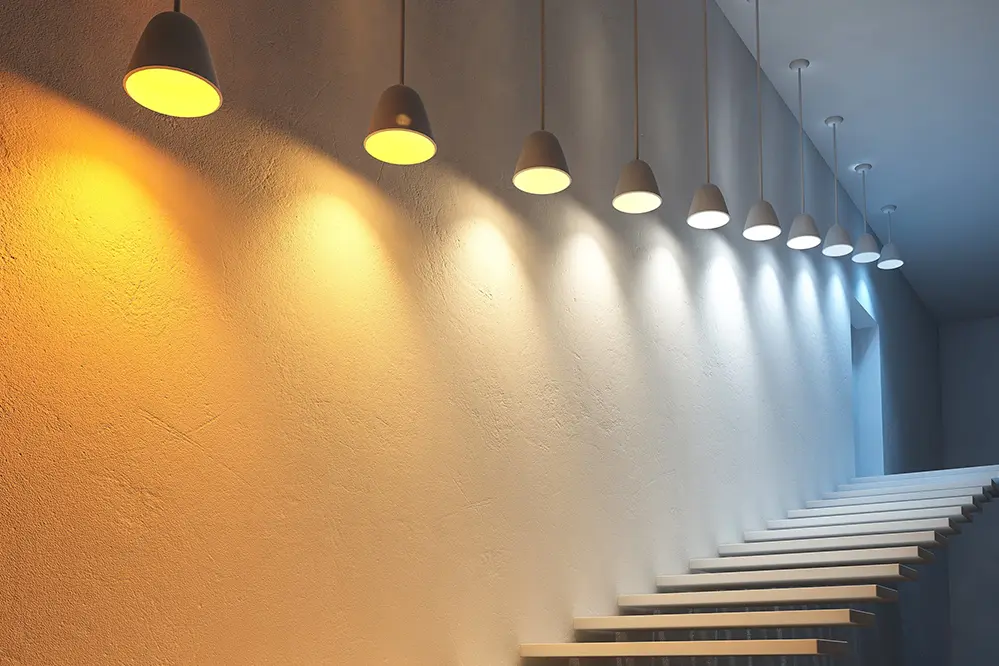
Understanding light color temperature, measured in kelvin, is crucial for creating the desired ambiance in any space, especially in the bedroom.
In lighting terminology, color temperature refers to the warmth or coolness of a light source, measured in Degrees Kelvin (K). Light sources with lower Kelvin values produce a warmer, more yellow/red light, while higher Kelvin values emit a cooler, more blue light.
For example, a light with a 2700K rating has a warm, relaxing glow, similar to a sunset, making it ideal for unwinding before sleep. On the other hand, a 5000K light resembles daylight and can help with activities requiring concentration.
Choosing the right color temperature involves understanding how these different temperatures affect mood and functionality. Warmer temperatures are generally more soothing, while cooler ones can enhance focus and alertness.
By grasping these principles, they can masterfully select the perfect bedroom light color temperature to match their needs and preferences.
Importance of Bedroom Lighting
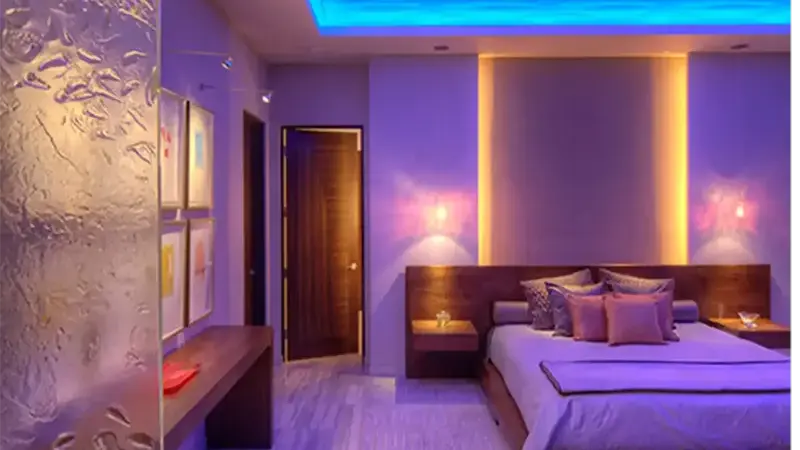
The significance of bedroom lighting cannot be overstated, as it shapes the environment where one retreats for rest and rejuvenation.
Since 2016, researchers investigating the correlation between lighting and mental well-being have consistently reported that proper bedroom lighting substantially improves sleep quality and overall mood.
Thus, it’s of utmost importance that one carefully curates their bedroom’s illumination, considering factors like color temperature, brightness levels, and light distribution to create an optimal sanctuary.
When mapping out the lighting for their bedroom, they should aim to balance between task lighting, functional, and ambient lighting, ensuring that the space is both practical and comfortable.
Optimized bedroom lighting can also enhance the aesthetic appeal of the room, making it a haven of serenity.
Optimal Color Temperatures for Sleep
For optimal rest, bedroom light color temperatures should be around 2700K, which emulate the warmth of sunset and candlelight.
This range, in terms of color temperature, creates a calming atmosphere, aiding the body’s natural circadian rhythm, thereby promoting better sleep quality. Studies have shown that warmer lighting tones are less likely to interfere with melatonin production, the hormone responsible for regulating sleep.
Furthermore, such gentle, warm tones foster a serene environment conducive to relaxation. In contrast to cool lighting, which can be stimulating, warm bedroom light color temperatures soothe the senses and prepare the mind for rest and rejuvenation.
When planning their bedroom lighting strategy, selecting lighting fixtures and bulbs that emit light within this optimal range can significantly impact their sleep quality and overall health. By prioritizing these specific color temperatures, they can create a peaceful sanctuary that supports healthy, restful sleep patterns.
Warm vs. Cool Light
Warm light, characterized by yellowish to reddish tones, mimics the essence of daylight’s quieter, more tranquil moments.
It often evokes comfort and relaxation, making it ideal for bedroom settings where unwinding is a priority. Choosing bulbs that emit warmer color temperatures (2700-3000K) ensures a serene environment, encouraging restfulness over stimulation.
Conversely, cool light’s bluish tones are more invigorating and best reserved for spaces requiring alertness.
Benefits of Warm Light

Warm light bestows numerous benefits, a significant one being its remarkable capacity to foster relaxation. This is particularly crucial in bedrooms, where the ultimate goal is restful sleep.
By choosing warm lighting, they enhance the ambiance, creating a “cocooning effect.” Warm light not only helps in winding down but also subtly encourages a serene transition into sleep.
Warm light can significantly reduce stress levels, improving overall emotional well-being.
In addition to the emotional comforts, the physical advantages are evident: warm light reduces eye strain and discomfort, particularly toward the end of the day when their eyes need it the most. Combining this with strategic light placement can transform any bedroom into a haven conducive to relaxation and renewal.
Benefits of Cool Light

Cool light, typically characterized by its bluish tones, offers numerous advantages that cater to more dynamic settings.
- Enhanced Alertness: Cool light simulates daylight, promoting a state of wakefulness and focus.
- Improved Task Performance: Ideal for activities requiring attention to detail, such as reading or studying.
- Mood Elevation: Exposure to cool light can uplift one’s mood, combating feelings of lethargy.
- Increased Energy Levels: Cool light helps in maintaining higher energy levels during the day.
It is particularly beneficial in spaces where productivity and alertness are paramount.
Incorporating cool light in workspaces can lead to heightened efficiency and a more energized atmosphere.
Understanding the specific needs of a room can help in strategically deploying cool light for optimal results.
Adjusting Light Color Temperature Throughout the Day
Adjusting bedroom light color temperature can significantly enhance one’s comfort and well-being.
In 2016, Michael A. Grandner, a renowned sleep expert, discovered that adjusting light color impacts sleep patterns, mood, and alertness.
Thus, it’s often recommended to use warmer light in the evening. Warmer light tones encourage relaxation and signal to the brain that it’s time to wind down.
Throughout the day, incorporating cool light, mirroring natural daylight, simulates alertness and enhances productivity, especially in areas designated for tasks.
Maintaining a dynamic lighting environment fosters a balanced daily rhythm and promotes overall well-being.
Choosing the Right Bulbs
Selecting appropriate bulbs whether incandescent or LED bulb is essential for optimal bedroom lighting.
One should pay attention to the lumens output of the bulb, as this indicates its brightness. It’s also crucial to check the color temperature, generally marked in Kelvins, to ensure it meets the desired ambiance. Generally, a range between 2700K and 3000K is ideal for bedrooms, providing a warm and inviting glow.
Smart bulbs offer flexibility.
Since these bulbs can be adjusted to different color temperatures – from soft, warm light perfect for winding down to brighter, cooler light for morning activities – they are a versatile and valuable investment.
When selecting bulbs, consider energy-efficient options which offer longevity and reduce utility costs over time. LED bulbs, for instance, not only save on energy but also provide a wide range of color temperatures to suit various needs and preferences, aligning perfectly with contemporary energy-conscious lifestyles.
Smart Lighting Solutions
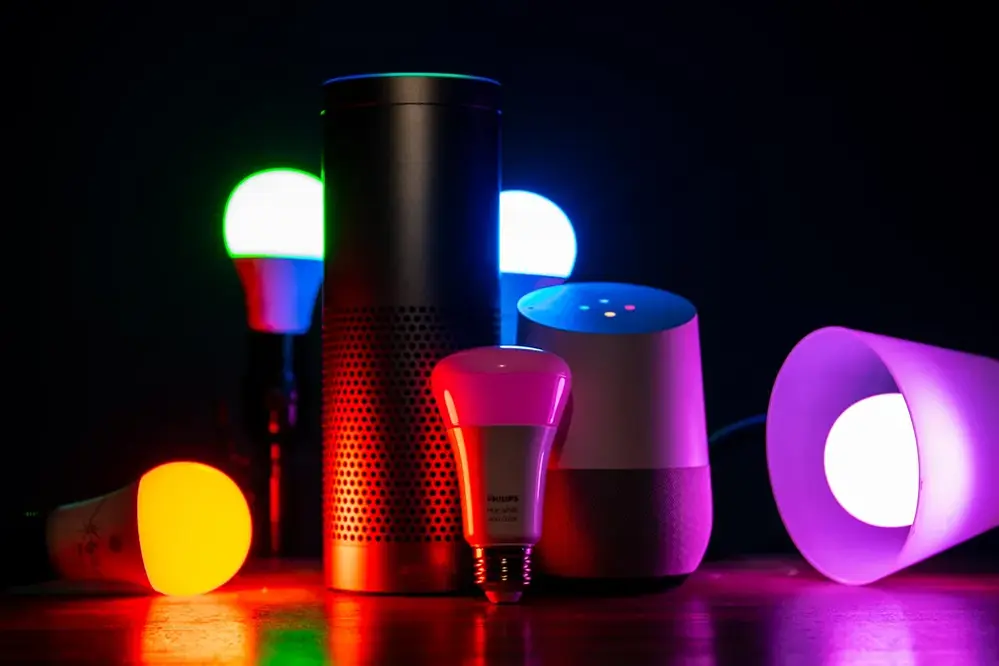
Smart lighting solutions offer adaptability, allowing any bedroom to transition effortlessly from serene sanctuary to vibrant workspace.
By incorporating smart bulbs into a bedroom lighting scheme, individuals can customize their light color temperature, dimming or creating the perfect atmosphere for any occasion. These systems enable users to adjust the lighting through a smartphone app or voice commands, facilitating effortless transitions from warm, comforting light for relaxing to cooler, energizing light for morning routines.
Additionally, smart lighting can be integrated with other smart home devices. This synergy allows for more cohesive automation, ensuring that lights adapt seamlessly to an individual’s daily schedule, enhancing comfort and convenience in their living environment.
Employing smart lighting solutions not only enhances the aesthetic and functional aspects of a bedroom but also contributes to energy efficiency and sustainability. By using advanced technology to control lighting precisely, individuals can reduce their energy consumption, minimize their environmental footprint, and foster a more efficient, eco-friendly home.
Tips for Creating a Cozy Bedroom Environment
To craft the perfect cozy oasis, consider incorporating thoughtful touches that make the space inviting and warm.
Firstly, opt for soft, ambient lighting to set a serene atmosphere. Choose warm-toned bulbs with a color temperature around 2700K-3000K, as these mimic the calming glow of natural light. This range is ideal for winding down and creating a snug, restful environment.
Additionally, layering lighting sources can further enhance coziness. Use a combination of bedside lamps, wall sconces, and string lights to create pockets of gentle illumination throughout the room.
Finally, complement your lighting choices with rich textures and soothing colors in your decor. Adding plush rugs, soft throw blankets, and calming color palettes not only augments the comforting feel but also adds a personal touch, reflecting one’s unique style while maintaining tranquility.
You can read our separate article on Install LED Strips in Your Bedroom.
Conclusion
Choosing the right bedroom light color temperature significantly impacts well-being by reducing stress and improving sleep quality. Combining warm light with layered sources creates a balanced, aesthetically pleasing, and functional environment. This thoughtful approach enhances personal comfort and living spaces, making it essential to understand and select the appropriate color temperature for optimal bedroom lighting.
